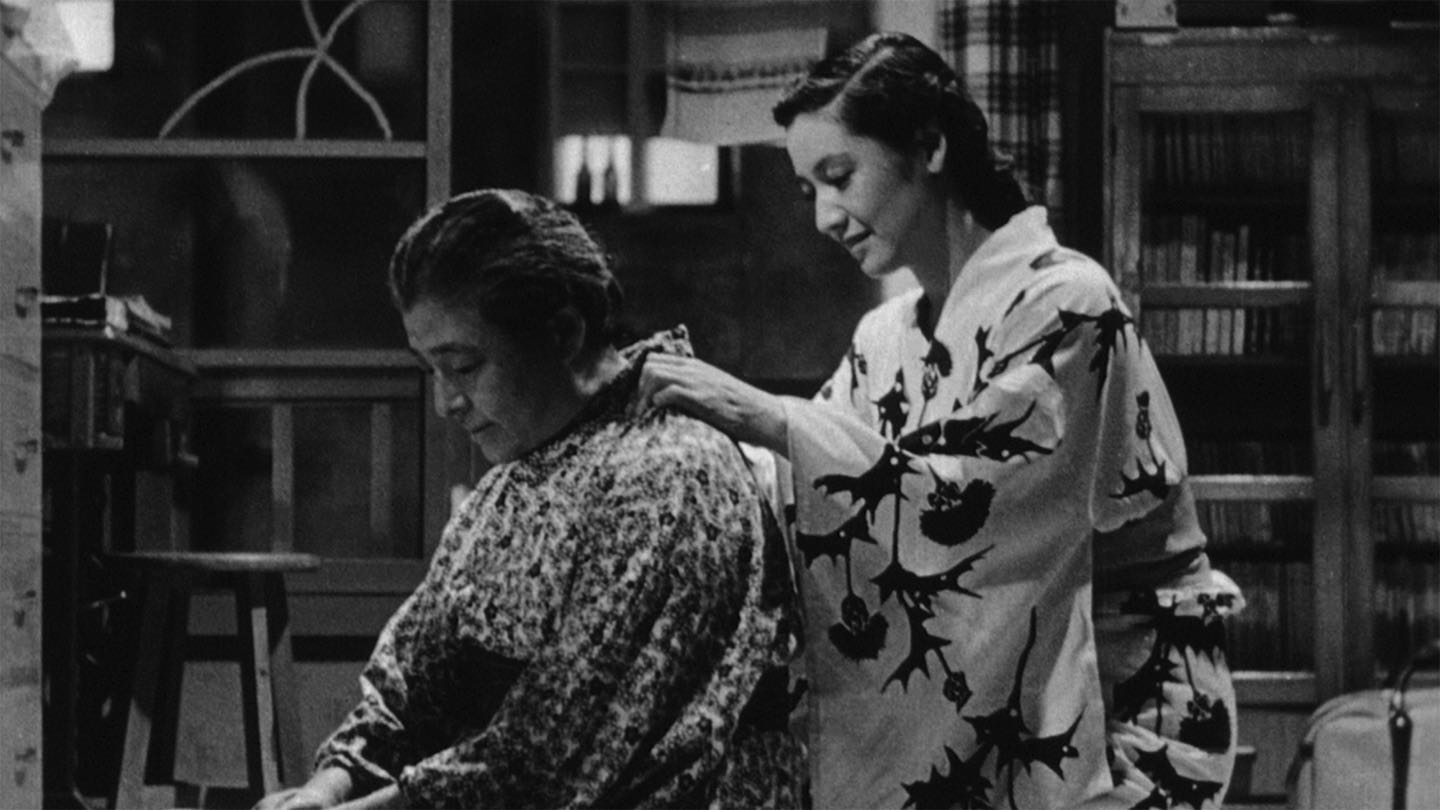
In the filmmaking canon, the Japanese director Yasujirō Ozu looms large.
Widely regarded as one of the greatest and most influential filmmakers ever, Ozu has received global acclaim from critics and filmmakers alike for his repertoire of family dramas. Most famously, in the 2012 Sight and Sound poll by the British Film Institute, 358 directors and filmmakers from across the globe selected Ozu’s masterpiece Tokyo Story as the greatest film of all time.
Despite all the critical acclaim that Ozu has received, average moviegoers do not widely discuss his films. In fact, other acclaimed Japanese filmmakers like Hayao Miyazaki and Akira Kurosawa may be more widely known today. Yet, even 70 years later, Ozu’s quiet dramas about Japanese familial life remain remarkably relevant in 2022.
A Consistent Visual Style

Born in 1903 in the Fukugawa district of Tokyo, Ozu began making films as early as 1927, though many of these have been lost to time. While some of his early pre-war films like I Was Born, But… and The Only Son won him some acclaim, it is his post-war dramas that define his legacy.
Late Spring, his first collaboration with beloved Japanese actress Setsuko Hara, showcases his signature style during the final stage of his career. It is the first film in the “Noriko Trilogy,” a thematically connected trilogy consisting of Late Spring, Early Summer, and Tokyo Story. Ozu would go on to collaborate with Hara on a number of different films until his death in 1963, after which Hara abruptly retired from acting.
The Noriko Trilogy contains all of the signature elements of Ozu’s idiosyncratic filmmaking style: dialogue spoken directly to the camera, low-angled “tatami shots,” long shots down hallways, using “pillow shots” of landscapes or objects as scene transitions, etc. His visual style was extremely consistent — he filmed exclusively through a 50mm lens and shot the majority of scenes indoors on a stationary camera. In fact, he eventually stopped doing pans and zooms entirely. His skill for shot composition is unparalleled, though a similar attention to geometric framing can be found in the dollhouse stylings of Wes Anderson (albeit dialed up in quirkiness) or in movies like Bong Joon-Ho’s Parasite, where it is used for dramatic purposes.
Besides cementing his visual style, the Noriko Trilogy also contains many of the themes commonly found in Ozu’s films: how family dynamics change over time, the pressures of both societal and familial expectations, love, loss, getting older, and moving on. These themes are explored throughout Ozu’s work. Their relatability make his films so powerful and deeply familiar.
In the documentary Tokyo-Ga, director Wim Wenders explains “Ozu’s films deal with the deterioration of the Japanese family and, thereby, the deterioration of a national identity… As thoroughly Japanese as they are, these films are at the same time universal. In them, I’ve been able to recognize all families, of all the countries of the world.”
Still Remarkably Relevant

In addition to their universality, Ozu’s domestic dramas feel especially relevant for our current moment. With so much content oversaturation today, the patience and subtle beauty of Ozu’s films provide a space for viewers to slow down and notice what is around them. Ozu’s deliberate pacing contrasts dramatically with the speed of social media and most modern movies.
In a world of constant stimulation, taking time to slow down is essential, especially as more of our life has moved online during the COVID-19 pandemic. Ozu’s films remind us of the peace found in everyday details: the beauty of nature, the simplicity of household objects, and spending time with loved ones. His films force us to take time to breathe and notice.
This specific time of year is also well-suited to Ozu’s films. With the Anglosphere holiday season just recently passed and the celebration of Lunar New Year approaching, Ozu’s emphasis on the importance of family and intergenerational communication has never felt more relevant. Tokyo Story, for example, is all about how the dynamics between parents and children change over time. It is a great reminder to intentionally value those around you, express gratitude to those close to you, and be patient with those both younger and older than us.
This is why Ozu’s films still have power over 70 years later—they help us to recognize the beauty of everyday life.
I encourage you to seek out Ozu’s films wherever they are showing. For instance, I recently saw the Noriko Trilogy in a special screening in honor of Setsuko Hara’s 100th birthday at The Cinematheque, an arthouse theatre in Vancouver, Canada. As cultural and educational institutions dedicated to showcasing essential cinema, theaters like The Cinematheque play a profound role in celebrating the achievements of both local and international artists. Hopefully more contemporary venues will continue screening Ozu’s films on the big screen, and expose a new generation of viewers to the ever-relevant work of a true master.
• • •